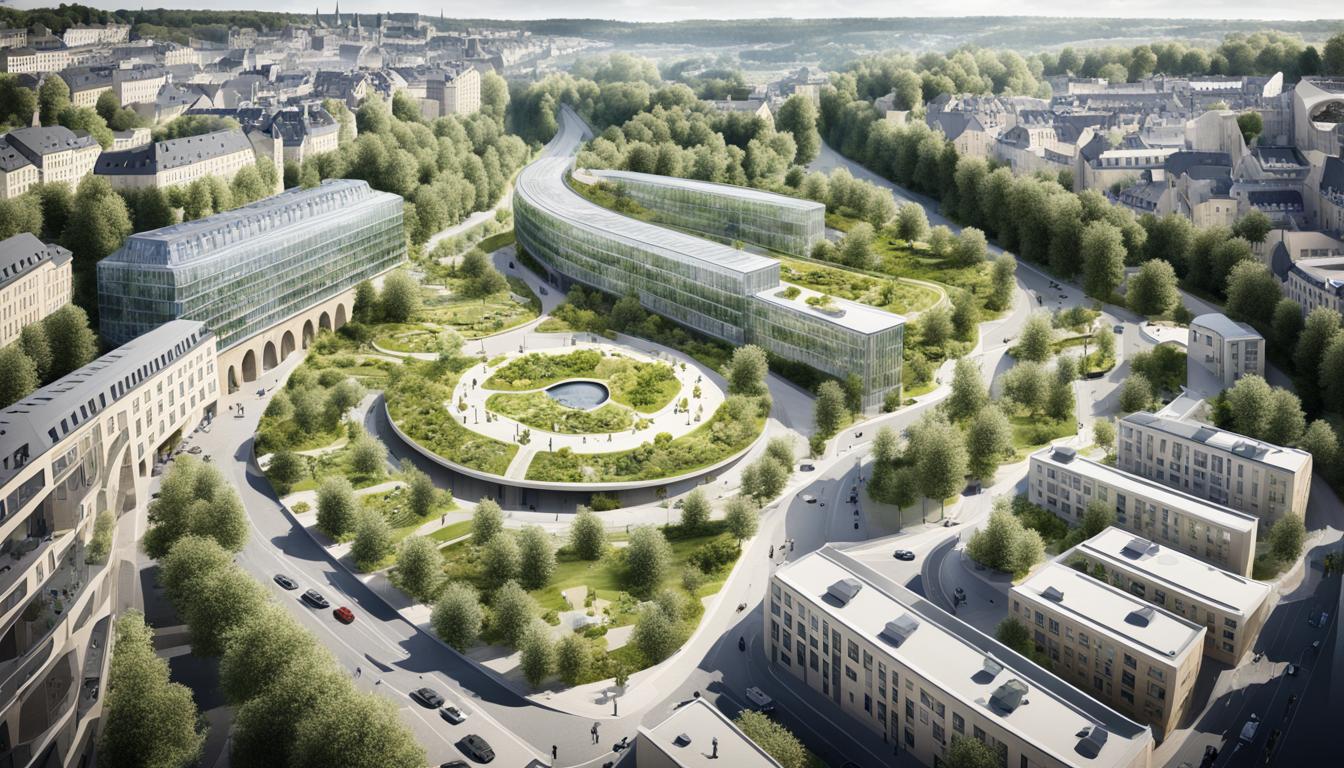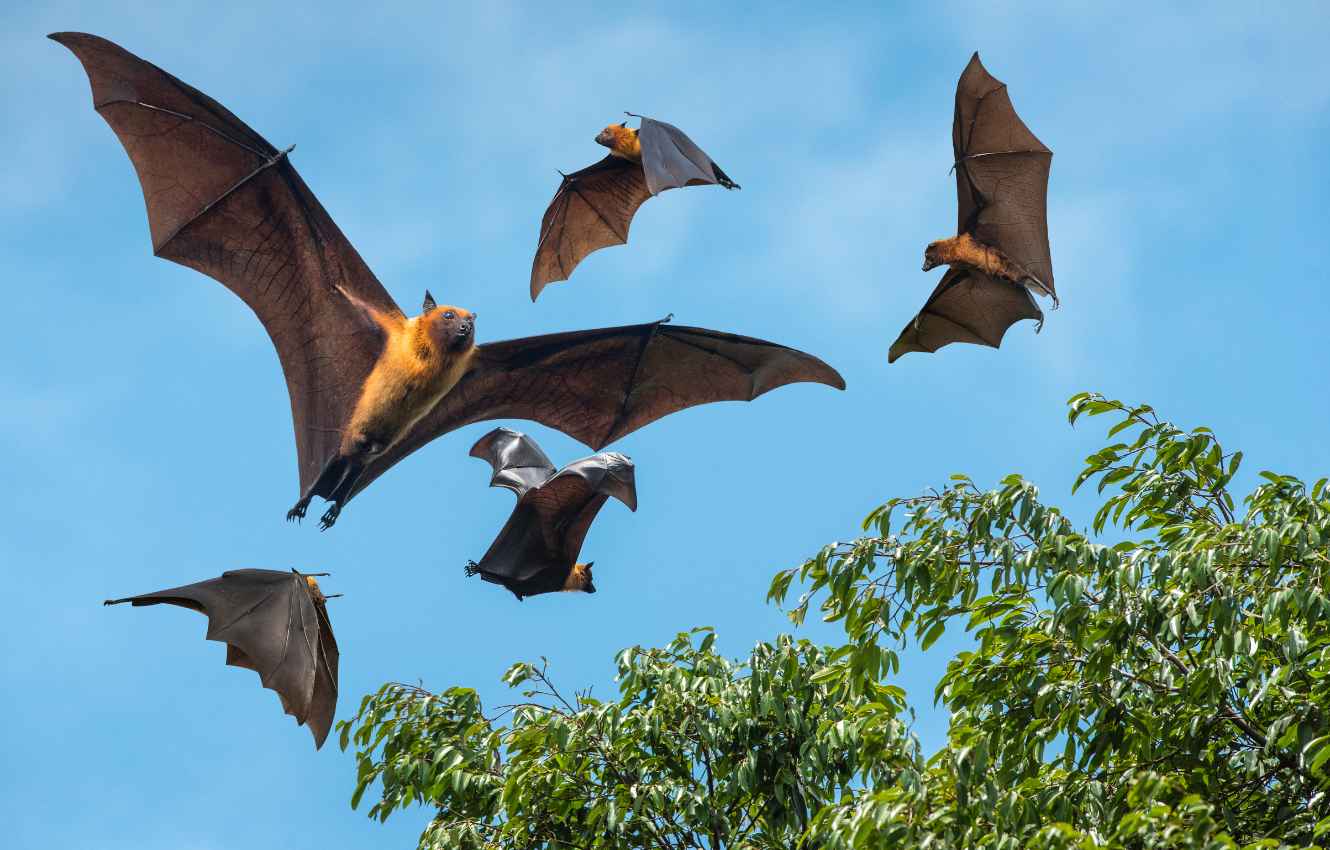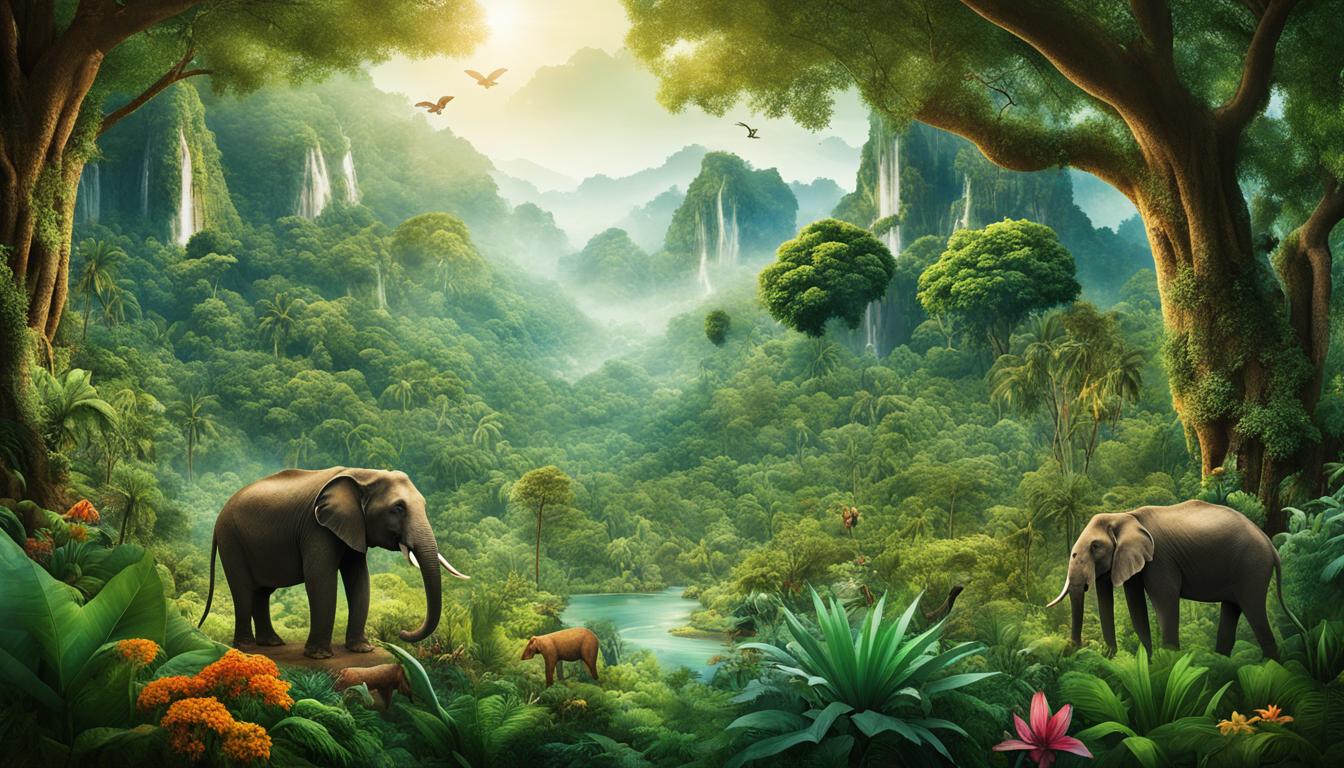Madagascar Biodiversity: Animal and Plant Species and What Is Under Threat
Madagascar, known for its amazing biodiversity, is home to a wide variety of plant and animal species. This island nation, situated off the southeast coast of Africa, is one of the world’s biodiversity hotspots. The rich ecosystem found in Madagascar is unlike anywhere else on Earth, with a remarkable number of species that are endemic, meaning they are found nowhere else in the world.
However, this unique biodiversity is currently facing numerous threats. Deforestation, hunting for local consumption, trafficking of animal and plant species, invasive alien species, and climate change are all endangering the delicate balance of Madagascar’s ecosystems.
- Madagascar is a biodiversity hotspot with a wide array of unique plant and animal species.
- Threats to biodiversity in Madagascar include deforestation, hunting, trafficking, invasive species, and climate change.
- Conservation efforts are crucial to protect Madagascar’s endemic species and preserve its fragile ecosystems.
- Madagascar’s biodiversity plays a vital role in providing ecosystem services and supporting local communities.
- International cooperation and ongoing initiatives are needed to safeguard Madagascar’s rich biodiversity for future generations.
Deforestation and Forest Degradation
“Deforestation and forest degradation are major threats to terrestrial ecosystems in Madagascar.”
Madagascar, known for its rich biodiversity, is currently facing severe challenges due to deforestation and forest degradation. These issues have resulted in the loss of a significant portion of the country’s natural forest cover, leaving only about 12% remaining. The consequences of deforestation in Madagascar are far-reaching, affecting not only the environment but also the livelihoods of local communities and the global community as a whole.
The primary cause of deforestation in Madagascar is the traditional agricultural technique known as “tavy,” which involves the conversion of natural areas into fields through slash and burn methods. While tavy can be a sustainable practice for subsistence agriculture, population pressure has led to shorter cycles and the exploitation of steep slopes. This has resulted in severe soil degradation, making the land unsuitable for agriculture, and the colonization of invasive species.
Loss of Forest Cover
The loss of forest cover in Madagascar has numerous negative impacts on the environment. Forests play a crucial role in regulating the climate by absorbing carbon dioxide and releasing oxygen. With the reduction in forest cover, there is an increase in greenhouse gas emissions, exacerbating the issue of climate change. Additionally, the destruction of forests leads to the loss of habitat for many plant and animal species, resulting in a decline in biodiversity.
Forest Degradation and Ecological Consequences
Forest degradation, which refers to the deterioration of forest quality and health, often occurs concurrently with deforestation in Madagascar. It involves activities such as selective logging, tree cutting for firewood, and the extraction of non-timber forest products. These activities disrupt the natural balance of the ecosystem, leading to a decline in species diversity and threatening the survival of endemic plants and animals.
The ecological consequences of deforestation and forest degradation are profound. Madagascar is home to numerous unique and endangered species, including lemurs, reptiles, and birds, many of which are found nowhere else in the world. The destruction of their habitats puts these species at risk of extinction, jeopardizing the delicate balance of the ecosystem and undermining the ongoing efforts to conserve Madagascar’s biodiversity.
The challenges posed by deforestation and forest degradation require immediate action. Efforts focused on sustainable land management, reforestation, and stricter regulations on logging are crucial to address these issues. Only through comprehensive conservation measures can we protect Madagascar’s precious forests, preserve its unique biodiversity, and ensure the sustainable future of the country.
Hunting for Local Consumption
Hunting for bushmeat in Madagascar poses a significant threat to the region’s biodiversity. The consumption of bushmeat, driven by protein needs and local trade, endangers various species including tenrecs, bats, turtles, amphibians, ducks, and primates. The golden-crowned sifaka, for instance, has seen its population decline due to hunting activities.
This rampant hunting of wildlife not only disrupts the delicate balance of the ecosystem but also has adverse effects on the country’s tourism industry. Madagascar is renowned for its unique biodiversity, attracting visitors from around the world. The threat to endangered species and the overall ecosystem impacts the appeal of the country as a tourist destination.
“The hunting of wildlife for local consumption in Madagascar has far-reaching consequences. It not only poses a tremendous threat to various species but also has a negative impact on tourism, which is a significant source of income for the country.”
Addressing the issue of hunting for bushmeat consumption requires a multi-faceted approach that involves sustainable hunting practices, alternative protein sources, and awareness campaigns. Conservation organizations and local communities are working together to promote responsible and ethical hunting practices and to educate the public about the importance of preserving Madagascar’s unique wildlife.
In addition to the conservation efforts, the government and international partners play a crucial role in enforcing regulations and implementing measures to combat illegal hunting activities. By tackling the issue of bushmeat consumption, Madagascar can protect its diverse wildlife, maintain a healthy ecosystem, and sustain its tourism industry for future generations.

Trafficking of Animal and Plant Species
The collection of species for international trade is a major threat to Madagascar’s biodiversity. Despite the country’s ratification of CITES, the enforcement of regulations is often ineffective. Legal trading quotas are not always respected, and even for legally tradeable species, there are issues with enforcement. This trafficking contributes to the introduction of invasive species, further endangering native flora and fauna.
| Data | Statistics |
|---|---|
| Number of species involved in trafficking | Over 1000 |
| Commonly trafficked species | Lemurs, reptiles, orchids, rosewood |
| Value of illegal wildlife trade | Estimated at USD 50 million per year |
| CITES Enforcement | Challenges and gaps in implementation |
Despite the ratification of the Convention on International Trade in Endangered Species of Wild Fauna and Flora (CITES), Madagascar struggles with enforcing regulations to combat the trafficking of animal and plant species. This illegal trade involves the smuggling of various species, including lemurs, reptiles, orchids, and rosewood, among others.
The enforcement of legal trading quotas is not always effective, allowing for the exploitation of protected species. These activities contribute to the introduction of invasive species into Madagascar’s delicate ecosystems, posing additional threats to native flora and fauna.
The illegal wildlife trade in Madagascar is estimated to be worth approximately USD 50 million per year, highlighting the scale and profitability of this illicit activity. CITES enforcement faces challenges and gaps in implementation, undermining efforts to combat trafficking and protect biodiversity.

Invasive Alien Species
Invasive species in Madagascar pose a significant threat to the country’s unique biodiversity, impacting endemic species and disrupting ecosystems. The rapid proliferation of exotic rats, along with the presence of invasive plant species, contributes to the degradation of the environment.

Threats to Biodiversity
The invasion of alien species in Madagascar has dire consequences for the delicate balance of the ecosystem. These species outcompete native plants and animals, leading to the decline of endemic species and reducing overall biodiversity.
Impact on Endemic Species
Endemic species, which are found only in Madagascar, are especially vulnerable to the threat of invasive alien species. The encroachment of these invaders disrupts their habitats, forcing them to compete for resources or altering their natural behavior and feeding patterns.
Rat Proliferation and Threat to Small Forest Mammals
The rapid proliferation of exotic rats poses a serious threat to small forest mammals in Madagascar. These invasive rats compete with native species for food and resources, putting endemic rodents and other small mammals at risk of extinction.
Invasive Plant Species and Ecosystem Degradation
Invasive plant species further contribute to the degradation of ecosystems in Madagascar. These plants can crowd out indigenous flora, reduce biodiversity, and negatively impact the overall health of forests and other natural habitats.
Climate Change
Climate change is a significant threat to the diverse ecosystems of Madagascar. One of the visible impacts of climate change is coral bleaching, which occurs due to rising ocean temperatures. Coral bleaching has severe consequences for the region’s coral reefs, including those found along the coast of Madagascar. Studies suggest that if current trends continue, Indian Ocean corals may completely disappear within the next few decades.
Coral reefs are vital for the entire marine ecosystem as they provide food, shelter, and breeding grounds for numerous marine species. The loss of coral reefs in Madagascar due to coral bleaching has a far-reaching negative impact. It disrupts the delicate balance of the marine ecosystem and threatens the survival of various fish, crustaceans, and other marine creatures.

Endemic Species and Unique Ecosystems
Madagascar is known for its exceptional biodiversity, driven by the high levels of endemism found on the island. Endemism refers to species that are found nowhere else in the world. In Madagascar, approximately 90% of the plants and 85% of the animals are endemic, making it a treasure trove of unique and rare species.
The isolation of Madagascar from mainland Africa and other landmasses for millions of years has allowed for long periods of adaptive radiation, where species diversify and adapt to fill ecological niches. This process has resulted in an incredible array of species and ecosystems that exist only on the island.
One of the most iconic examples of endemic species in Madagascar is the lemur. These primates have evolved into numerous distinct species, each occupying different habitats and displaying a wide range of behaviors and physical characteristics.
Lemurs in Madagascar
The lemur family in Madagascar consists of various species, each with its unique adaptations. For example, the sifakas are known for their incredible leaping abilities, while the aye-aye possesses elongated fingers that enable it to extract insects from tree bark. Lemurs play a crucial role in Madagascar’s ecosystems as seed dispersers, pollinators, and herbivores.
But lemurs are just the tip of the iceberg in terms of Madagascar’s endemic species. The island is also home to an astonishing diversity of chameleons, with over half of the world’s known species found here. These colorful reptiles have incredibly specialized adaptations, including their ability to change color and their impressive tongue projection to capture prey.
Amphibians in Madagascar are equally remarkable, with over 99% of the country’s frogs being endemic. The Mantella frogs, for instance, display striking colors as a warning signal of their toxicity. These unique adaptations have allowed them to thrive in the island’s diverse ecosystems.
Madagascar’s insect diversity is mind-boggling, with a plethora of unique species found only on the island. The Giraffe Weevil, for example, possesses an elongated neck, similar to a giraffe, which it uses to battle for mates and defend its territory.
The birdlife of Madagascar is equally exceptional. The island boasts over 100 endemic bird species, making it a top destination for bird enthusiasts. The vividly colored Madagascar paradise flycatcher and the iconic indri, the largest living lemur, are just a couple of examples of the unique bird species found on the island.
These examples only scratch the surface of the incredible endemic species found in Madagascar. From incredible insect diversity to unique reptiles, amphibians, and birds, the island possesses a wealth of wildlife that is found nowhere else on Earth.

Impacts of Habitat Loss
Habitat loss, primarily through deforestation, poses a significant threat to Madagascar’s biodiversity. Endangered lemurs and other endemic species are especially vulnerable to the destruction of their natural habitats. The loss of habitat in biodiversity hotspots like Madagascar has far-reaching effects on ecosystems, disrupting the delicate balance and diversity of plant and animal life.
Deforestation in Madagascar
The rapid rate of deforestation in Madagascar is a matter of grave concern. The country has already lost a significant portion of its natural forest cover, with only about 12% remaining. This loss is largely attributed to the traditional agricultural practice known as “tavy,” resulting in the conversion of natural areas into fields through slash and burn methods. However, population pressure and unsustainable agricultural practices have led to severe soil degradation and the proliferation of invasive species.
“The destruction of natural habitats in Madagascar has a devastating impact on the unique and endangered species that call the island home.” – Conservationist Dr. Jane Williams
Threats to Endemic Species
The detrimental consequences of habitat loss extend to the outstanding endemic species found in Madagascar. Lemurs, in particular, are severely affected by the destruction of their habitats. These charismatic primates, known for their unique characteristics and critical roles in ecosystem functioning, face the threat of extinction if their habitats continue to be diminished.
The Importance of Biodiversity Hotspots
Madagascar is recognized as one of the world’s biodiversity hotspots, hosting a remarkable variety of species found nowhere else on the planet. However, the loss of habitat in these hotspots not only endangers endemic species but also disrupts the intricate web of interactions that sustain the ecosystem’s health and stability. Conserving these hotspots is essential to protect the rich biodiversity they support.
Conservation Efforts
The critical situation calls for immediate and dedicated conservation efforts. Organizations and local communities are working together to establish protected areas and implement sustainable land management practices. Through these efforts, it is hoped that the impacts of habitat loss can be mitigated, allowing for the preservation of endemic species and the unique ecosystems they inhabit.
Importance of Biodiversity in Madagascar
Madagascar’s biodiversity plays a crucial role in maintaining the balance of its unique ecosystems, providing a wide range of essential ecosystem services. These ecosystems support the livelihoods of over 18 million people in Madagascar, who rely on biodiversity for their subsistence needs.
One significant aspect of Madagascar’s biodiversity is its abundance of medicinal plants. These plants hold tremendous potential in the development of treatments for various diseases, including cancer. One such plant is the Madagascar periwinkle, which has been used in the production of drugs for the treatment of leukemia and other forms of cancer. The exploration of Madagascar’s biodiversity for medicinal purposes represents a promising avenue for scientific advancements in healthcare.
Additionally, Madagascar is home to several food plants that are beloved and widely consumed around the world. The country is famous for its vanilla, which is used in a multitude of culinary creations, from desserts to beverages. Coffee is another well-known export, with Madagascar producing unique and flavorful beans that are sought after by coffee enthusiasts worldwide. Preserving the biodiversity of food plants ensures the continuation of these valuable culinary traditions.
To highlight the importance of biodiversity in Madagascar, let’s take a closer look at some of the key ecosystem services it provides:
- Provisioning Services: Biodiversity in Madagascar contributes to the production of food, timber, and other valuable resources. These services directly support local communities in meeting their basic needs.
- Regulating Services: The diverse ecosystems in Madagascar help regulate air quality, water supply, and climate. They play a vital role in mitigating natural disasters, such as floods and droughts, protecting communities and infrastructure.
- Cultural Services: Madagascar’s biodiversity is deeply intertwined with the cultural heritage of its people. Traditional customs, ceremonies, and rituals often revolve around nature, showcasing the intrinsic value that biodiversity holds for local communities.
- Supporting Services: Biodiversity forms the foundation of ecosystems, providing habitats, nutrient cycles, and pollination services. These supporting services are essential for the survival of plants, animals, and overall ecosystem health.
It is crucial to recognize the conservation value of Madagascar’s biodiversity and take action to protect it. By safeguarding the ecosystems, medicinal plants, and food plants, we can ensure the sustainable management of biodiversity, benefiting both present and future generations.

Note: Image depicts the diverse flora and fauna of Madagascar, emphasizing its rich biodiversity.
Conservation Efforts in Madagascar
Madagascar has implemented various conservation initiatives to protect its biodiversity. One of the key strategies is the National Strategy for Sustainable Management of Biodiversity (NSSMB). The NSSMB aims to conserve ecosystems and genetic resources, while also focusing on reducing pressures on biodiversity. By addressing the root causes of biodiversity loss, Madagascar is working towards a more sustainable future.
Protected areas play a crucial role in biodiversity conservation. Madagascar has expanded its network of protected areas to cover approximately 8% of the country’s total area. These protected areas serve as important refuges for endangered species and provide essential habitats for the unique flora and fauna found in Madagascar.
Additionally, ongoing efforts are being made to address threats such as habitat loss and overexploitation. Legislation is being implemented to regulate activities that contribute to biodiversity decline, and partnerships with local communities and stakeholders are being established to promote sustainable practices.
Sustainable financing is another integral aspect of conservation efforts in Madagascar. By investing in sustainable initiatives, the country can ensure the long-term viability of its biodiversity. Funding from international organizations, grants, and contributions from the public are essential in supporting these conservation initiatives.
In summary, Madagascar is committed to preserving its unique biodiversity through comprehensive conservation efforts. By implementing the NSSMB, expanding protected areas, addressing threats, and promoting sustainable financing, the country is taking significant steps towards the reduction of pressures on biodiversity and the long-term conservation of its natural ecosystems.

Main Conservation Efforts in Madagascar:
| Conservation Initiatives | Description |
|---|---|
| National Strategy for Sustainable Management of Biodiversity (NSSMB) | Aims to conserve ecosystems, genetic resources, and reduce pressures on biodiversity. |
| Expansion of Protected Areas | Approximately 8% of the country’s total area is now designated as protected areas. |
| Legislation and Partnerships | Efforts to address threats like habitat loss and overexploitation through regulations and partnerships with local communities. |
| Sustainable Financing | Investment in sustainable initiatives through funding from international organizations, grants, and public contributions. |
Successes and Challenges in Biodiversity Conservation
Madagascar has made significant progress in biodiversity conservation despite the challenges it faces. While the threats to its unique ecosystem and species are still present, there have been notable achievements in protecting its rich biodiversity.
Slow Deforestation Rate
In recent years, Madagascar has witnessed a decrease in the rate of deforestation. Efforts to raise awareness about the importance of preserving forests and sustainable land-use practices have contributed to this positive trend. The country’s commitment to reducing deforestation is a critical step towards safeguarding its valuable ecosystems and endemic species.
Increase in Protected Areas
Madagascar has also made strides in expanding its protected areas network. These protected areas play a vital role in conserving threatened and endemic species while preserving critical habitats. The establishment and effective management of protected areas are crucial to safeguarding Madagascar’s biodiversity and ensuring the long-term survival of its unique wildlife.
Conservation of Threatened and Endemic Species
Conservation strategies have been implemented to protect threatened and endemic species in Madagascar. Efforts to conserve iconic species like lemurs and rare amphibians have yielded positive outcomes. These initiatives involve habitat restoration, captive breeding programs, and community engagement to mitigate the threats facing these vulnerable species. By focusing on the conservation of threatened and endemic species, Madagascar is taking proactive steps to preserve its unparalleled biodiversity.
However, despite these successes, numerous challenges remain in biodiversity conservation in Madagascar. Ongoing efforts are crucial to address these challenges and ensure the long-term protection of Madagascar’s unique ecosystems and species.
Conclusion
The biodiversity of Madagascar is currently facing significant threats from deforestation, hunting, trafficking, invasive species, and climate change. It is crucial to prioritize conservation efforts in order to safeguard the unique ecosystems, endemic species, and the valuable ecosystem services that biodiversity provides.
Conservation initiatives are essential in protecting Madagascar’s rich biodiversity for the present and future generations. Ongoing collaborative efforts and international cooperation will play a key role in ensuring the preservation of this remarkable natural heritage.
The importance of biodiversity conservation cannot be overstated. By protecting Madagascar’s unique ecosystems, we also safeguard the countless benefits they provide, from medicinal plants that hold potential in the fight against diseases, to iconic food crops that originated on the island. Additionally, preserving biodiversity ensures the continued existence of key ecosystem processes and services that play a vital role in the well-being of both humans and the environment.
Although progress has been made in addressing the challenges, ongoing efforts are crucial to combat the threats and ensure the long-term conservation of Madagascar’s remarkable biodiversity. By supporting sustainable management practices, implementing legislation, expanding protected areas, and fostering public awareness and education, we can make a tangible difference in the preservation of this invaluable natural treasure.
FAQ
What are the major threats to biodiversity in Madagascar?
The major threats to biodiversity in Madagascar include deforestation, hunting for local consumption, trafficking of animal and plant species, invasive alien species, and climate change.
What is the primary cause of deforestation in Madagascar?
The primary cause of deforestation in Madagascar is the traditional agricultural technique known as “tavy,” where natural areas are converted into fields through slash and burn methods.
What species are threatened by hunting and consumption of bushmeat in Madagascar?
Species such as tenrecs, bats, turtles, amphibians, ducks, and primates are threatened by hunting and consumption of bushmeat in Madagascar.
What is the impact of trafficking on Madagascar’s biodiversity?
Trafficking of animal and plant species in Madagascar contributes to the introduction of invasive species, further endangering native flora and fauna.
What are the threats posed by invasive alien species in Madagascar?
Invasive alien species in Madagascar, including rats and invasive plants, disrupt the balance of ecosystems and endanger endemic species.
How does climate change affect biodiversity in Madagascar?
Climate change, including rising ocean temperatures and coral bleaching, has severe consequences for Madagascar’s coral reefs and the entire marine ecosystem.
Why is Madagascar’s biodiversity significant?
Madagascar’s biodiversity is significant due to its high levels of endemism, with approximately 90% of plants and 85% of animals found nowhere else in the world.
What is the impact of habitat loss on Madagascar’s biodiversity?
Habitat loss, primarily through deforestation, poses a significant threat to Madagascar’s biodiversity, particularly to endangered species like lemurs.
What is the importance of biodiversity in Madagascar?
Biodiversity in Madagascar provides essential ecosystem services, including food and medicinal resources, and supports the livelihoods of over 18 million people.
What conservation efforts are being made in Madagascar?
Madagascar has implemented various conservation initiatives, including the National Strategy for Sustainable Management of Biodiversity and the expansion of protected areas.
What successes and challenges exist in biodiversity conservation in Madagascar?
Madagascar has achieved some successes in biodiversity conservation, such as slowing deforestation rates and increasing protected areas. However, ongoing efforts are necessary to address remaining challenges.
Why is ongoing conservation important for Madagascar’s biodiversity?
Ongoing conservation efforts are vital to protect Madagascar’s unique ecosystems, endemic species, and the ecosystem services provided by biodiversity.








